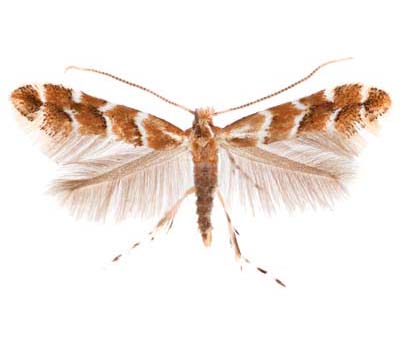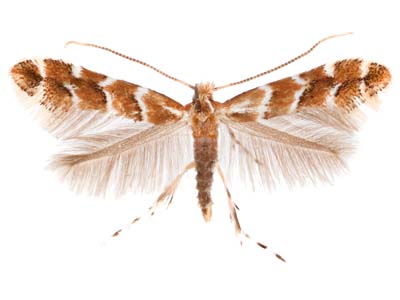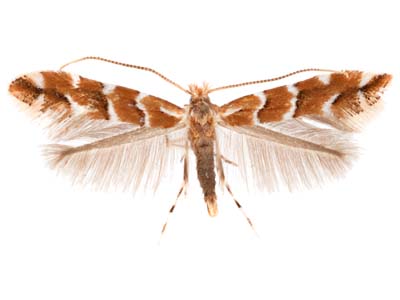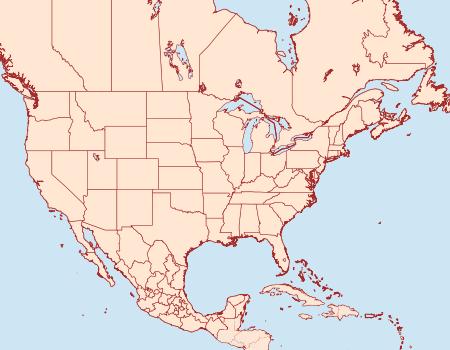Gracillariidae
990090n –
19090 Cameraria ohridella
(Deschka & Dimic, 1986)
|
|
|
| Photographs are the copyrighted property of each photographer listed. Contact individual photographers for permission to use for any purpose. |

© Todd Gilligan
|
| Distribution: |
Europe; not found in North America north of Mexico. |
Seasonality
and Size: |
Three generations per year.
Forewing length approximately 3.5mm |
Larva and
Host Plants: |
Larvae are leaf miners on Aesculus hippocastanum (Horse Chestnut).
Larvae are small (up to 5.5 mm long) and difficult to identify, however they can be distinguished from similar looking Phyllonorycter by their reduced legs ; the leaf mines can be used to aid in identification. C. ohridella have blotch mines that do not cross primary or secondary leaf veins. Typically there will be multiple, distinctive yellow-brown blotch mines between the secondary veins of an Aesculus leaf. . (see references) |
Description/
Field Marks: |
Adults are orange-brown with a basal white longitudinal streak extending from the pro-thorax through the basal fascia. This streak is most visible if the specimen is in very good condition. This is followed by four interrupted fascia, with the third being completely broken just below the middle. Fascia have a posterior margin of black scales. The head is mostly tufted orange scales and with a white frons. |
| Similar Species: |
- Cameraria ohridella resembles other Gracillariidae, particularly those in the genus Phyllonorycter; however. It's dark orange-brown wings and white frons is distinctive. The host and appearance of the leaf mine can aid in identification. Larval and pupal characters can be used to reliably distinguished C. ohridella from Phyllonorycter. C. ohridella 5th and 6th instars possess reduced thoracic legs and resemble small round tubers with rudimentary claws. The pupae of C. ohridella have antennae that are longer than the hind legs, where as Phyllonorycter have longer hind-legs than antennae.. Furthermore, pupae possess a “strong, inwardly curved thorn” and a spinoid seta laterally on segments 1-5. Similar, but smaller thorns are present only a few Quercus-feeding Phyllonorycter. Finally, C. ohridella pupae lack a cremasteral hook, which is present in most Phyllonorycter.
|
| Synonymy: |
ohridella (Deschka & Dimic, 1986) |
|
| References (Caution: DNA barcoding at BOLD provides evidence of relatedness, not proof of identification; some BOLD specimens shown may not be sequenced.) |
- (1) Natural History Museum: HOSTS- website
- (2) Lee, D. Natural History Museum: Invasive species, Cameraria ohridella website
- (3) de Prins, J, de Prins W, and de Coninck E (2003) The pupal morphology of Cameraria ohridella compared to that of the genus Phyllonorycter ( Lepidoptera: Gracillariidae ). Journal of Pest Science 76, 145-150 [pdf]
|

© Todd Giligan

© Todd Giligan
|






